It would be nice if everything you planted in the garden was chosen for its beauty. But sometimes it’s about screening out noise, neighbours, wind and other people’s bad taste in roof colours and letterboxes.
Fortunately, there are many suitable trees for building a blockade between your garden and your neighbour’s boundary, and, wonder of wonders, they’re usually cheap. You could pay $40 for a fabulous Red As Magnolia that’ll shed its foliage in winter and reveal the neighbour’s shrine to aliens, but a Lilly Pilly at $10 will grow like crazy and act as an almost impenetrable barrier.
I planted Lilly Pillies as ornamental trees when I first came here, never realising they’d practically double in size upwards and outwards every year and require endless hacking and slashing to stop them obliterating the driveway. But if you want screening trees that’ll grow quickly, look attractive, behave well and ask for nothing, these are your babies.
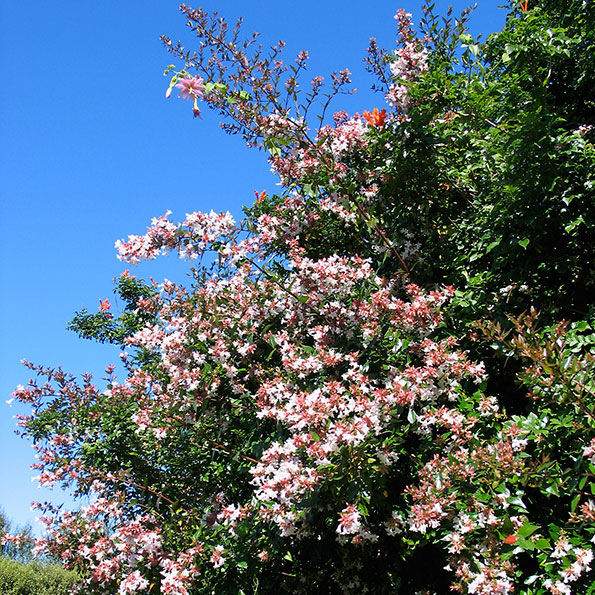
Abelia has a lovely, informal habit but can also be trimmed to keep it tidy.
Plants can offer low-cost alternatives for screening, as opposed to fences and walls. They take longer, but with careful planning, a bit of creativity and a variety of plants, you can easily create attractive screening to serve multiple purposes.
Space is probably the major consideration. If it’s tight, then a hedge may be the best you can do. But if you have plenty of room, creating a dense, layered screen will deal to noise, neighbours and all kinds of other nuisances, as well as enhancing your property.
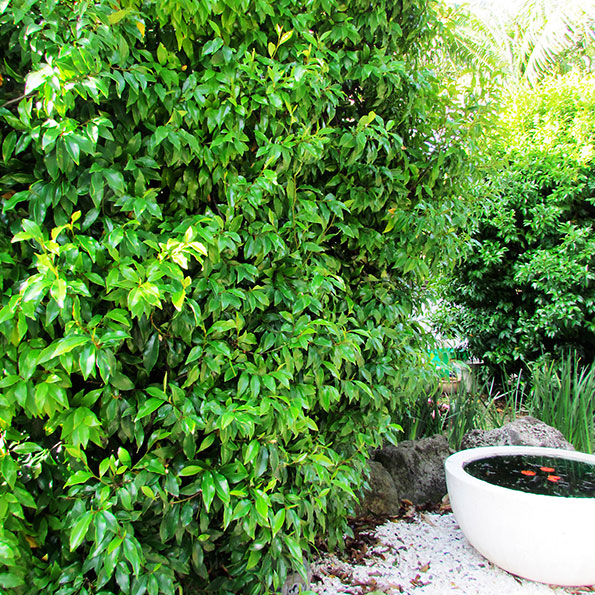
It’s hard to go past the Port Wine magnolia as a screening tree with its thick foliage, attractive shape and highly scented white flowers.
Rather than planting rows of trees all the same size, try using a variety of plants that gradually step down. Small trees at the back, big shrubs in the centre and small shrubs at the front will give you a more interesting look, especially if you stagger the planting so they appear more natural. But keep them close together – screens don’t work if there are holes in them and you can guarantee any gap will quickly attract wind and the neighbours’ dogs and children.
Look up the growing habits and characteristics of the plants you like, to see which are best for your environment and purpose.
If you want serious screening that stays in place for the whole year, you’ll need evergreens, but don’t let that stop you planting a delicious deciduous specimen in front of your barrier to add a change of colour and texture.
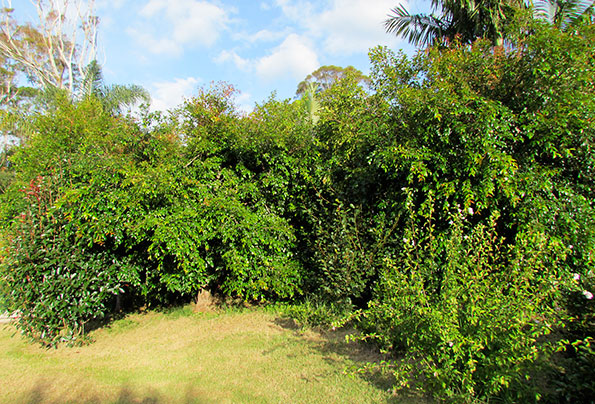
Lilly pillies create the back row of this screen, with photinia, magnolia yunensis and hibiscus helping out in front.
Eugenia Ventinati (weeping lilly pilly)
One of New Zealand’s favourite hedge trees, this evergreen shrub has glossy green leaves tipped bronze/red on new growth. It likes well-drained soil, plenty of sun and it’s frost tolerant. If you want a visual screen, you can clip it into a hedge, but if you’re trying to cut out noise, plant in clumps and let them go for it. Prune to thicken the foliage. The syzygium smithii variety is commonly known as Neighbours Be Gone.
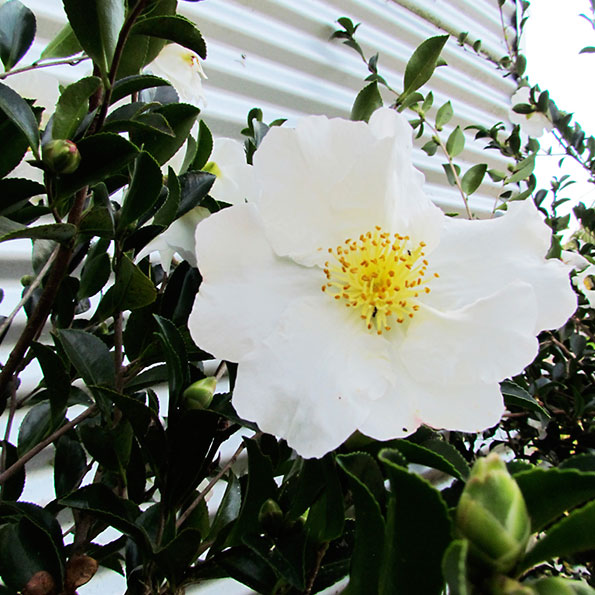
This camellia sasanqua is 2.5m tall and does a great job of screening off this tin shed.
Camellia
Camellias come in two main varieties – japonica and sasanqua. For hedging and screening, the sasanqua is the preferred choice with its faster growing habit, smaller leaves and better sun tolerance. The flowers are an added bonus.
Michelia figo
The Port Wine magnolia is such an under-rated tree, considering its glossy, evergreen foliage and heavily scented white flowers blushed with burgundy. It likes part shade and free draining soil, and given those conditions, should grow happily to 3m x 3m – a good size for a sound-proofing screen.
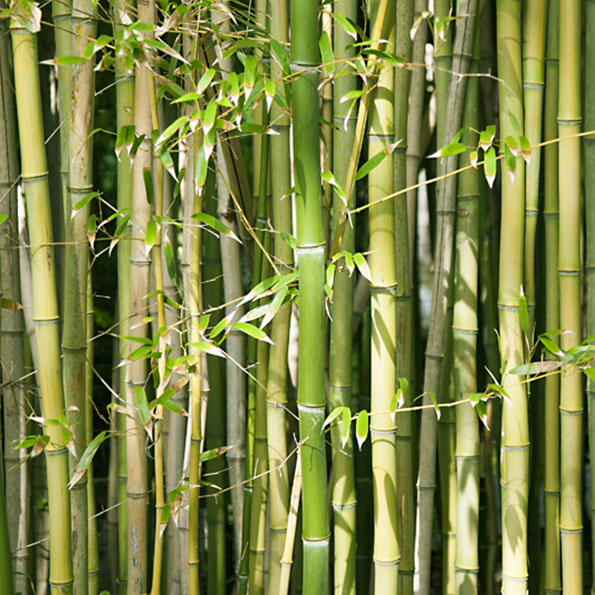
Bamboo grows quickly and it comes in a variety of species.
Bamboo
Bamboo is, of course, a real shelter belt, especially in the north. It’s another speedster that’ll give you privacy very quickly, and it comes in a variety of species so you can choose something for your situation. Keep in mind that some varieties can be invasive. I don’t much like the look of bamboo but for me it has one advantage – the sound of the trunks rubbing together is very appealing.
Photinia
Photinias come in larger and smaller leaf varieties with the smaller leaf types more suitable for hedges up to two metres.
They make white flowers, and they look great mixed up with Abelia grandiflora, which also has pinky white flowers and red tinged foliage. These grow to two or three metres, so use them as a middle line of your shelter belt, and plant some red and bronze flaxes or astelias in front.



